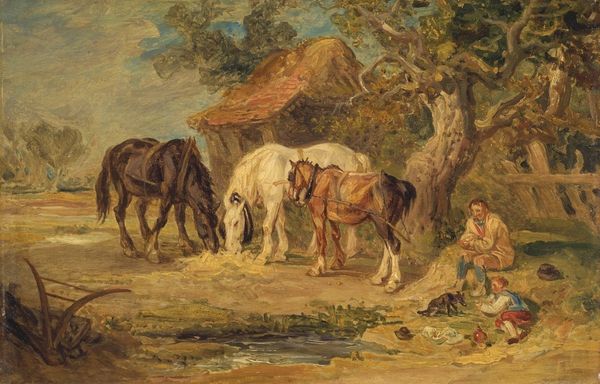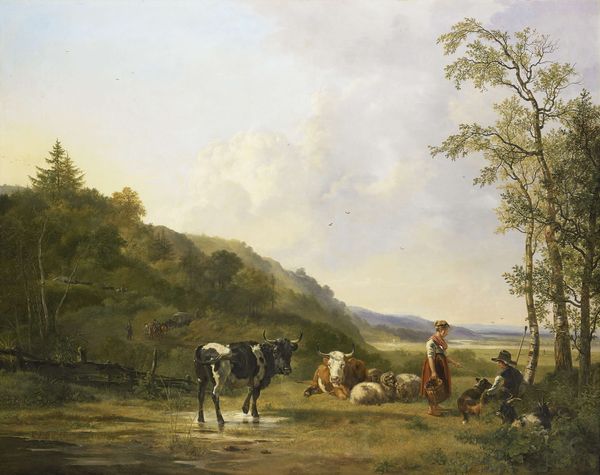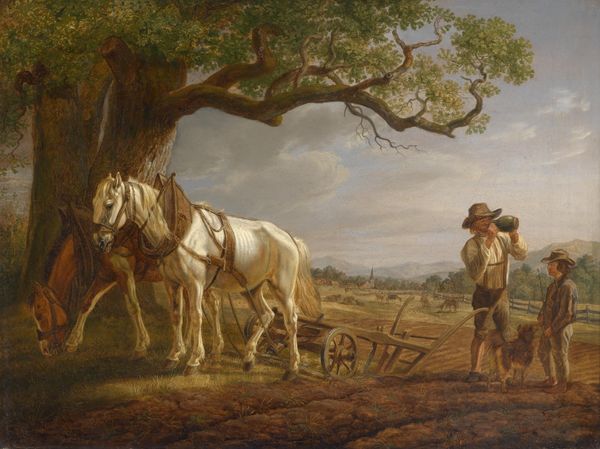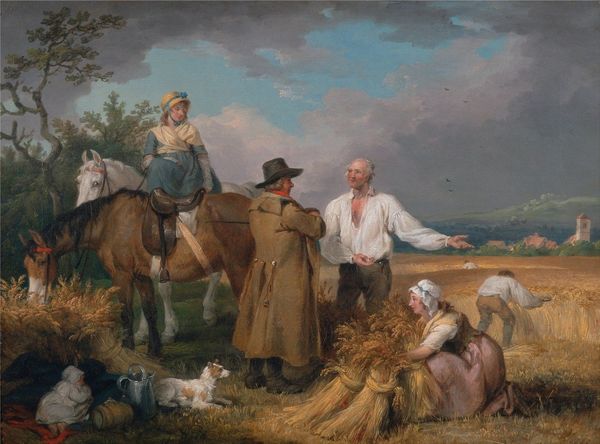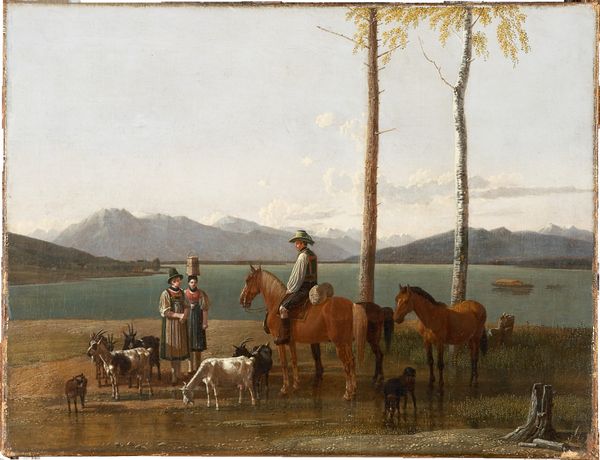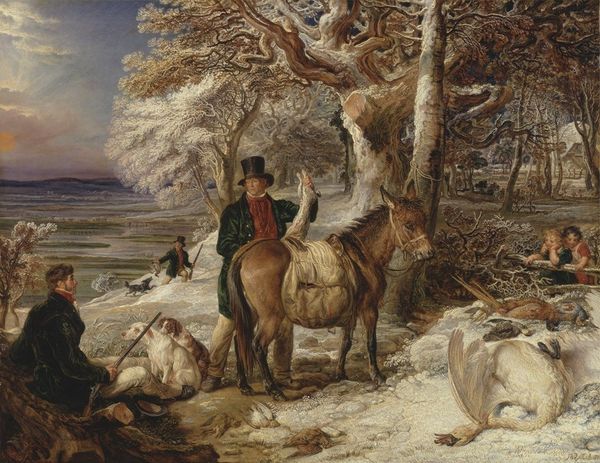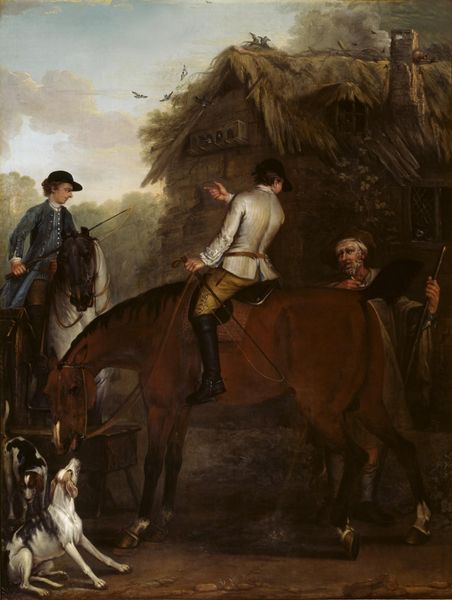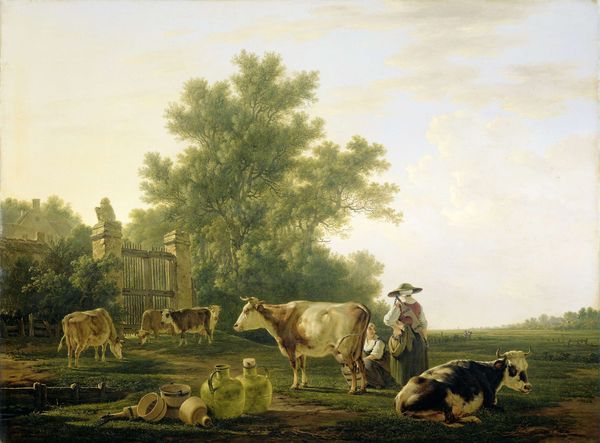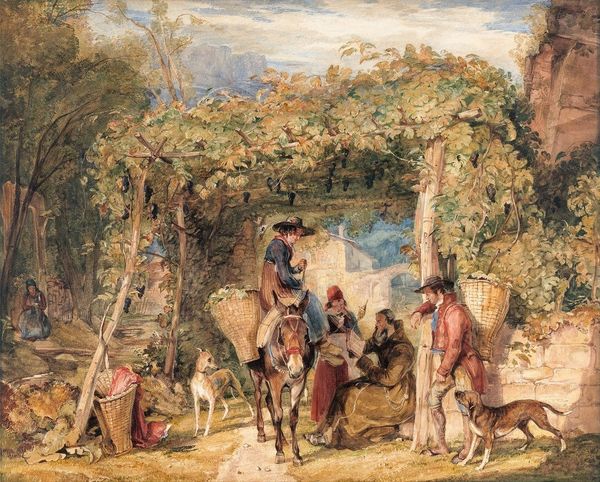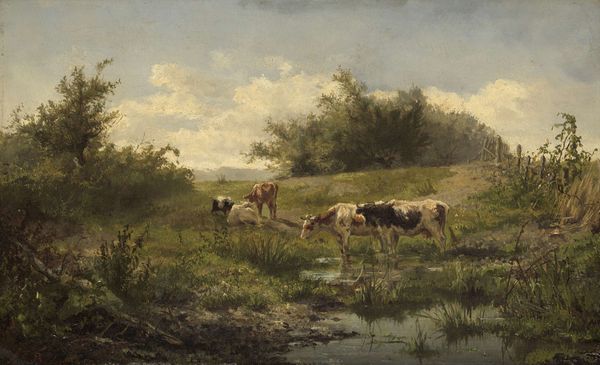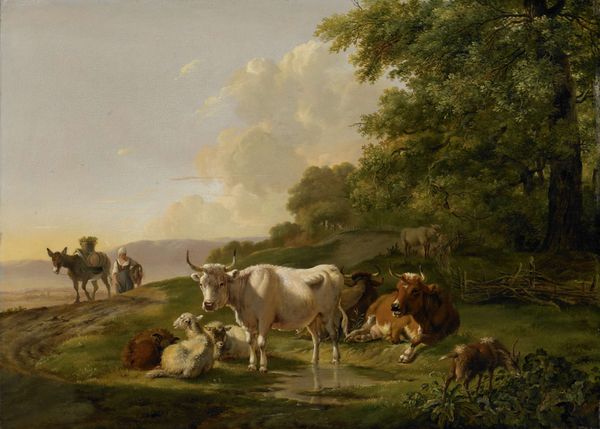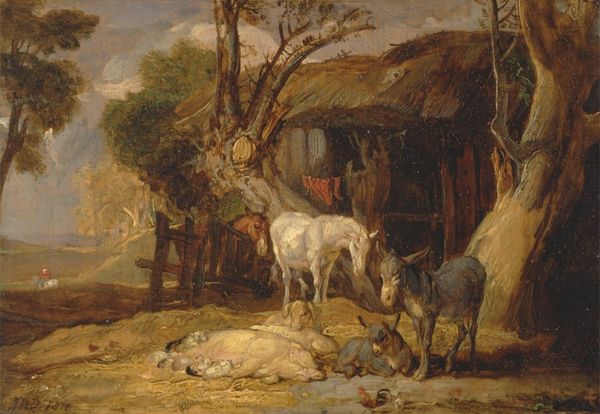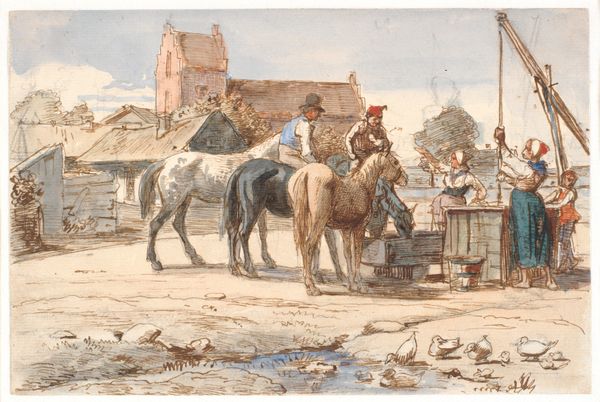
Dimensions: support: 832 x 1372 mm frame: 1210 x 1755 x 165 mm
Copyright: CC-BY-NC-ND 4.0 DEED, Photo: Tate
Curator: Robert Walker Macbeth's "The Cast Shoe" presents a slice of rural life; it strikes me as a rather idealized vision of labor. Editor: The texture alone is compelling—I'm curious about Macbeth's technique. What sort of brushstrokes did he employ to achieve this level of detail? Curator: Looking closely, we see the figures are engaged in simple tasks – shoeing a horse, carrying goods. It speaks to the economic and social structures inherent in village life. Editor: And the very materiality of it – the weight of the tools, the animal's strength, the clothing – how did the laboring classes produce and consume, and what was the relationship between them? Curator: Certainly. The placement of the inn hints at the central role such establishments played, reinforcing community and perhaps creating class divides. Editor: This image offers an opportunity to consider intersectional dynamics of gender and labor in the late 19th century through the perspective of someone who had deep experience as an engraver and etcher. Curator: It's a window into a world now past, a reminder of the changing landscape of work and community. Editor: A fascinating snapshot indeed, urging us to reflect on historical relationships between labor, leisure, and social status.
